 Palo Alto Stanford Heritage
Palo Alto Stanford Heritage All of the buildings pictured on this page are in Palo Alto. Many are homes, so out of deference to their owners privacy, we show only the street part of each address. But can you find them nonetheless?
Admire these homes as you locate them, but quietly please. And, as you search, experience our town's richly varied architecture, look around you for its many unpictured gems, and have fun!
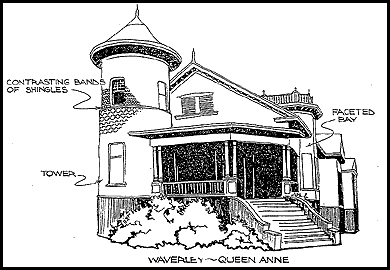 |
Originally an English style formulated by Richard Norman Shaw in the 1860's, which bore little relation to the architecture of the time of Queen Anne. It went through many transformations before it arrived in California about 1885. Less formal than earlier Victorian styles, it sought to be picturesque with an asymmetrical plan, complex roof line, corner tower, and gables. Frequently displaying a variety of textures and colors in bands of different siding materials including brick, clapboard, and shingles. Having bay windows of various shapes, porches, and balconies, and a variety of predominantly classical ornamental details. Note: The Eastlake Movement was an American nineteenth–century architectural and household design reform movement started by architect and writer Charles Eastlake (1836–1906). The style is a much simplified part of the Queen Anne style of Victorian architecture. |
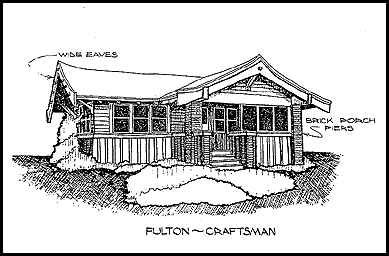 |
Easily confused with the Shingle Style, it is most often found in bungalows and in combination with the Colonial Revival. Its concern is with the handmade character of the construction and the use of natural materials, while Shingle Style structures are more concerned with form and texture. The Craftsman mode is the architectural manifestation of an early 20th century movement which fused English Arts and Crafts attitudes with an appreciation of a life lived close to nature. Craftsman buildings use materials in their unpainted wood. If bricks are used, they are usually clinker bricks, as if the man-made material had been subjected to forces of nature. The forms are generally ground-hugging with pronounced horizontal lines and shallow-gabled roofs with wide, sheltering overhangs. In Palo Alto, the Craftsman style merges into the Shingle style and the Colonial Revival. |
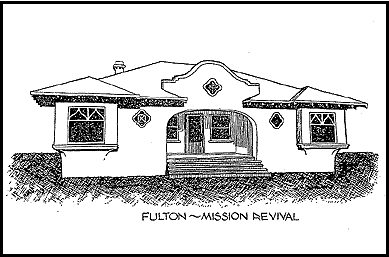 |
The Mission Revival style is a combination of exterior and interior features which varied as the style developed. Inspired by the romantic turn of the century California rediscovery of an Hispanic past, the Mission Revival style combined varied exterior and interior features that changed somewhat as the style developed. Normally characterized by arches, hipped red tile roofs, shaped curvilinear parapets or gabled ends, and white stucco walls. Ogee arches and quatrefoil windows are typical details. |
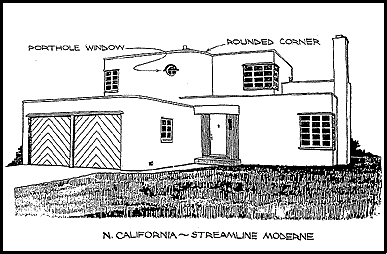 |
A style focused upon the combining of simple curved and rectangular building forms, designed and ornamented to express the motion and speed of transportation modes that inspired its evolution. |
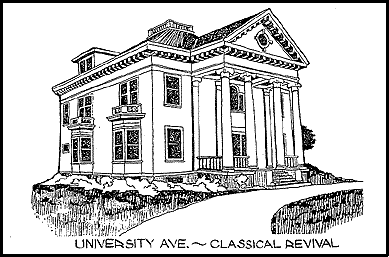 |
The revival of interest in Classical antiquity, dating from the mid-eighteenth century and especially notable in architecture. |
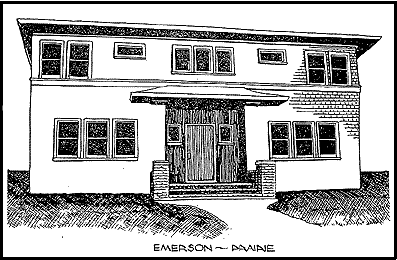 |
Derived from Midwestern architecture, notably that of Frank Lloyd Wright. It is often found in combination with other styles. Horizontality is a primary emphasis of the mode. Design elements include ribbon windows with wooden casements, massive and rectangular supporting roofs of porches or verandahs, low, often hipped, roofs with projecting eaves, suppressed heavy-set chimneys, low terraces, and a distinctly horizontal flare to eave ends. |
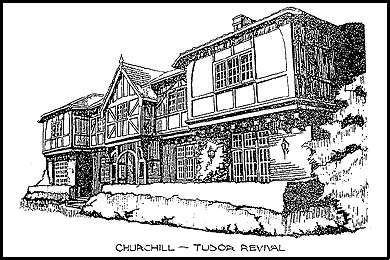 |
A Period Revival style that reflects and reinterprets the English Tudor architectural mode, in a twentieth century expression. |
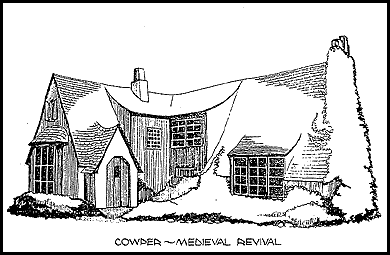 |
A style associated with a sometimes fairy tale aspect. |
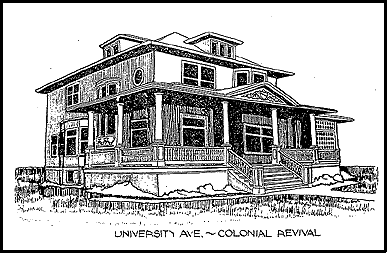 |
A phase of late nineteenth century American architecture which revived Georgian plans and forms, especially in domestic building. Characteristics include symmetrical facades with hip or gambrel roofs, classical detailing, pedimented entrance porticos, Palladian windows, and swag details. The style often uses Queen Anne or Classic revival stylistic details. |
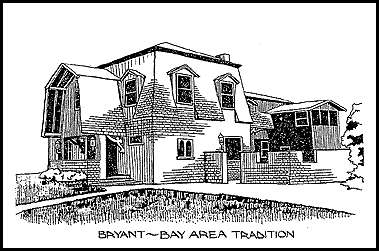 |
The Bay Area Tradition is a design philosophy which integrates in a playful and mannerist fashion fragments of the real or imaginary local past, current fashion, and whatever predilections the designer may have. In its first phase (1890–1920), its practitioners were Bernard Maybeck, A. Page Brown, Willis Polk, Ernest Coxhead, A.C. Schweinfurth, John Hudson Thomas, and at least in some of her work, Julia Morgan. The second phase, which began in the late 1920's, was established by William Wilson Wurster, Gardner Dailey, and Mario Corbett. In the middle 1960's, designs by Charles Moore, Joseph Esherick, and others signaled a new, third phase of the tradition. |
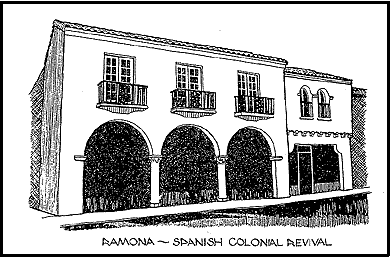 |
The style is characterized by red-tiled roofs of low pitch, flat roofs surrounded by tiles parapets, occasionally by arched forms, and stucco or plaster walls. There may be carved or cast ornament of considerable elaboration, usually concentrated around the openings. Doorways may be flanked by columns or pilasters. Balconies, with railings of wrought iron or wood, are common features. So are window grilles, rejas, of wood with turned spindles or of iron. Windows often very much in size in a single elevation, when they are asymmetrically disposed with broad expanses of wall between. Structures are oriented inwardly to garden patios with pergolas, arcades, etc., rather than toward the street. |
Several builders dominated in the late 1940s, 50s and 60s as developments sprung up to fill the need for housing. Coastwise, Mackay, Joseph Eichler, and Stern and Price added to the available housing stock throughout town, but primarily south of Colorado Avenue, the city limit in 1946.
Examples of these homes can be found on the following streets.
Coastwise: Bryant Street, Coastland Drive, Middlefield Road
Eichler: Adobe Place, Alger, Ames, Ben Lomond Drive, Briarwood Way, Bryant Street, Carlson Circle, Charleston Road, Cork Oak Way, Creekside Drive, Diablo, East Meadow, Edgewood, El Cajon Way, El Capitan, Elsinore Drive, Ferne Avenue, Greenmeadow Way, Greer Road, Holly Oak Drive, Ivy Lane, Janice Way, Kenneth Drive, Los Arboles, Louisa, Marshall Drive, Metro Circle, Murdoch, Nelson, Parkside, Ramona Circle, Redwood Circle, Roosevelt Circle, Scripps Court, Shasta Drive, Tioga Court, Torreya Court, Toyon Place, Van Auken Circle, Wildwood Lane
Mackay: Ferne Avenue, Mackey Drive
Stern and Price: Alger, Ames, Ashton, Cowper Street, East Meadow Drive, Emerson, Maureen, Middlefield, Murdoch, Price Court, Rambow, Stern Avenue
Baluster — turned or rectangular upright supporting a railing or handrail, a series of these is called a balustrade.
Battern board — wide boards set vertically whose joints are covered by narrow strips of wood (battern) over joints.
Bead board — a narrow, vertical row of planks with a small ridge (bead) between them.
Capital — the head of a column.
Clerestory (Clearstory) — a portion of a window above other windows or doors which admits daylight to the interior.
Chair rail — a horizontal molding fixed to an interior wall about 4-5 feet above the floor. Also called dado rail.
Coffered ceiling — a sunken panel in the ceiling in the shape of a square, rectangle or octagon.
Composite capital — the Roman elaboration of a Greek Corinthian column. Its upper part is Ionic and the lower is Corinthian.
Cornice — the upper and projecting part of an entablature in Classical architecture. A projecting, continuous, prominent horizontal feature located near or at the top of an architectural composition.
Dentil — tooth-like classicaI ornament used in cornices or molding.
Egg and dart molding — decorative molding comprising alternating egg-shaped and dart-shaped motifs.
Entablature — in classicaI architecture, it is that part of a structure between the column capital and the roof or pediment comprising the architrave, frieze and cornice.
E-mail us at either webmaster@pastheritage.org or president@pastheritage.org.
![]() Palo Alto Stanford Heritage—Dedicated to the preservation of Palo Alto's historic buildings.
Palo Alto Stanford Heritage—Dedicated to the preservation of Palo Alto's historic buildings.
Copyright © 2015 Palo Alto Stanford Heritage. All rights reserved.